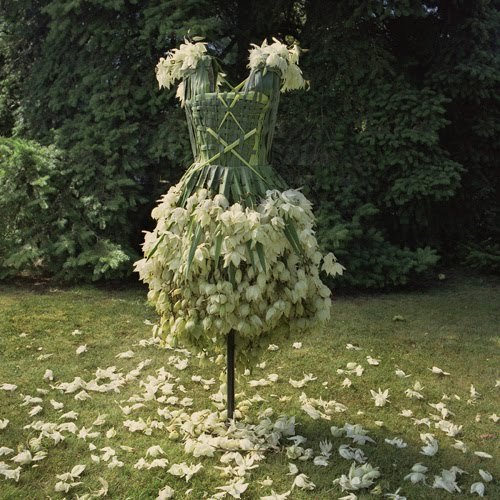
For my participation in Responsible Consumption Month, I had a two-part aspiration. One was not to buy new clothes -- or to examine my actions in that realm. The other was to schedule a home-energy audit.
The second part of that is done. It cost $75, of which $25 will be donated to the local agency that runs the food pantry, shelter, and soup kitchen in my town. I got new water-saving shower heads and washers in all faucets, new compact fluorescent lights (in many instances replacing older model ones), weather stripping on doors to the outside. Mainly, however, I learned that we already do what we can to reduce energy consumption. There were no big fixes, just tweaks.
I'd guessed that, but I wanted to make sure we weren't missing anything. I'm pretty good with consumption of actual resources.
One the no-new-clothes front, this week's contemplation had to do with the urge to obtain clothing whose function is already covered. Let's face it, if clothing were simply utilitarian, if all we needed was protection from the elements -- warmth when it's cold, sweat absorbers when it's hot, protection from frostnip and sunburn and hypothermia and nettles and other people's fluids -- when to buy new things would not be an issue. You'd buy them when you need them.
 But that's not what we do. Because that's not all clothing is. It doesn't just protect our skin, it provides a means for wordless social communication (or word-full if you choose to wear a T-shirt that says "Blow Me," as I saw in Prospect Park last weekend. The message, I'd say, was open to interpretation.) It's a way we present who we think we are to the world. It's a costume for the roles we play. We can try to fit in or stand out; we can look the part even if we don't feel it.
But that's not what we do. Because that's not all clothing is. It doesn't just protect our skin, it provides a means for wordless social communication (or word-full if you choose to wear a T-shirt that says "Blow Me," as I saw in Prospect Park last weekend. The message, I'd say, was open to interpretation.) It's a way we present who we think we are to the world. It's a costume for the roles we play. We can try to fit in or stand out; we can look the part even if we don't feel it.Playing on those insecurities is big business. Consumer spending accounts for 70 percent of economic activity in the US (including autos, food, gas, and heating fuel). The government reported that in March retail sales hit a record high of $411.1 billion, 24 percent higher than the recession low hit in March 2009. Good news, Wall Street analysts say. Or is it?
The website ecouterre.com reported last week on fashion giant H&M's sustainability report, while noting that fashion is built on disposibility:
So one way to frame the issue for an environmentally conscious image-conscious person is in terms of resources. If karma means that all actions have reverberations beyond our own sphere, what does the action of buying unneeded clothes do beyond filling my closet?The Swedish fast-fashion chain is second only to Inditex, owner of Zara, as the world's largest clothing retailer. Estimates suggest that it sells more than 550 million garments each year, with quarterly profits that amount to more than $412 million.
Now, in what Observer columnist Lucy Siegle, author of To Die For: Is Fashion Wearing Out the World? , calls an "audacious move," H&M wants to position itself as a paragon of sustainability. Its 2011 sustainability report, released on Thursday to coincide with the debut of its latest Conscious Collection, suggests as much, yet the fact remains that disposable fashion, characterized by hair-trigger turnovers, low-wage production, and rueful longevity, shoulders much of the blame for the planet's environmental and social degradation.
(I added the italics.)
(photo from treehugger.com)
If I choose to own hybrid cars, recycle twice as much trash as I throw out, swap out my light bulbs and faucets, and wrap myself up in multiple layers all winter long to be a responsible energy consumer, can awareness of the damage fashion does to the world affect my shopping habits?
Here's a great graphic from Ecouterre on the second life of our clothes. There's a longer version here

No comments:
Post a Comment